Kürten was intensely studied by Hirschfeld and willingly filled out one of his Psycho-Biological Questionnaires. The sessions revealed much about the psychology of lust murderers. Kürten attempted to parade his normality and high intelligence but the link between cruelty, humiliation, and sexual gratification was hardwritten into his demented psyche. Kürten’s father repeatedly stripped his wife naked before the eyes of his children and then beat her unmercifully before raping her. In Kürten’s building, a sadistic dogcatcher taught the boy how to control animals by masturbating and then whipping them. One of Kürten’s earliest memories, as a six-year-old, was throttling—and possibly killing—a female classmate. The stories transfixed Berlin.
Before he was beheaded, Kürten bragged to his executioner that he looked forward to the next supreme pleasure of his depraved life: hearing the sound of blood spurting from his decapitated torso while his head bounced on the gallows floor.
The Curious Career and Untimely Death Of Fritz Ulbrich
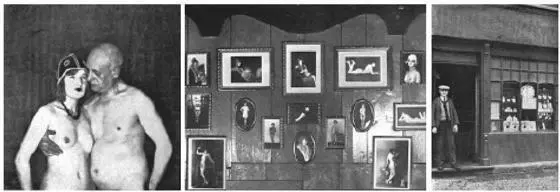
Ulbrich and model, studio wall and storefront, 1930
At the end of January 1931, one sensational murder-trial lifted the veil on Berlin’s erotomania and its toxic linkage into the city’s lower-middle classes. For months, local crime reporters and sexologists issued lengthy accounts and examinations of the convicted perpetrators and their unlikely victim, Fritz Ulbrich, a 57-year-old watchmaker. In a sense, both psychoanalysts and newspaper readers interpreted the court proceedings as an indictment of Weimar Berlin’s unregulated and out-of-control sexual folkways as well as the growing viciousness of petty street criminals.
An unassuming businessman, Ulbrich married three times and fathered four children. He ran a small repair shop in Berlin North but his hobby and secret obsession was amateur erotic photography. Starting in 1921, Ulbrich turned his tiny backroom office into a pornographic studio and laboratory. He trolled the industrial parks and outlying regions of Berlin in search of compliant teenage models. Astonishingly, over 1,500 saucy Berlinerinnen acquiesced to the pudgy watchmaker’s darkroom voyeurism.
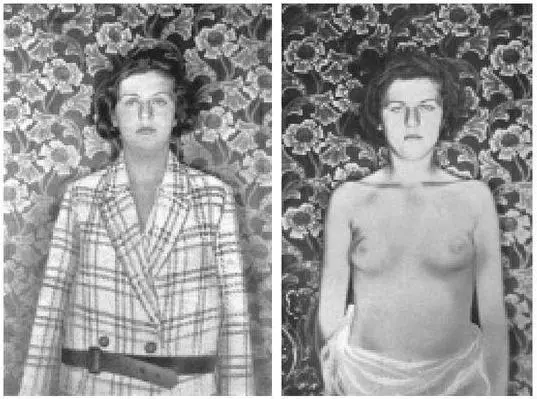
Lieschen Neumann, before and after
Why and how the bourgeois Ulbrich accomplished his daunting mission fascinated Germany’s press corps and shed light on a little known aspect of the Golden Twenties’ Sex-Rush: the impoverished, the middle-aged, the non-artistic, and the disregarded of Berlin also wanted their impious divertissements in the promiscuous city.
Ulbrich approached fresh-faced girls on the street and politely inquired if they had an interest in appearing in his nude tableaux. Most agreed, believing this might be a first stepping stone to fashion magazine exposure or revue stardom. The randy auteur arranged imitative still-life scenes that extended from lesbian romantic couplings (with S&M overtones) to bewigged bare-breasted portraits. He rarely offered his charges little more than a cheap trinket or photographic rendering of their work.
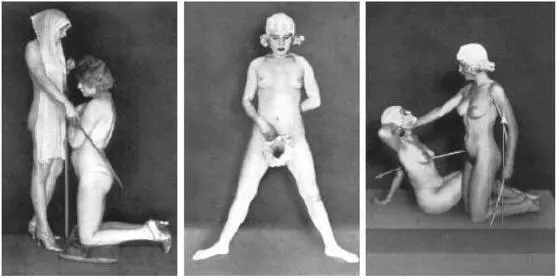
Fritz Ulrich, Before the Nun , Diana, and Amazon Float
To outsiders, Ulbrich’s fetishistic compositions revealed a banal and utterly listless aesthetic talent. In fact, the repairman’s direction was so lacking in professional flair and Nacktkultur pictorial vivaciousness that the Steinmeier Revue House allowed him to stage his Living Statues as a comic prelude to their real erotic sketches. Ulbrich’s ghastly naked floats clearly belonged on a Cabaret of the Nameless program and were even more ridiculed. But that did not impede the relentless smith- cum -pornographer or his unending stream of showbiz wannabes.
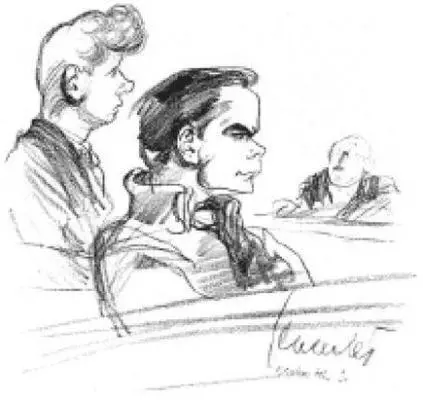
Stolpes and Benziger in court
Lieschen Neumann, a 15-year-old delinquent, was introduced to Ulbrich in the fall of 1929. He paid her five Marks and began to dress her in Diana and other fauxclassic costumes. She allowed herself to be photographed and paraded in a variety of hothouse presentations. But Neumann was no innocent, working-class Pygmalion with sparkling eyes and flawless skin. She had larger, more ambitious plans.
After one year, Neumann decided to do away with her benefactor and steal his money. She elicited her 22-year-old, unemployed boyfriend, Richard Stolpe, to murder Ulbrich in his studio bed. With a promise of 28 marks, Stolpe brought along an accomplice, Erich Benziger, and together they asphyxiated the obsessive old man.
The reckless crew was quickly apprehended and brought to trial. On February 4th, 1931, Neumann was sentenced to eight years and three months of hard labor in prison, Benziger to six years and three months; her lover was condemned to die by hanging. Unfortunately, Ulbrich was not there to record the disquieting denouement.
Criminal Rings and the Underworld
Like all metropolises of the interwar period, Berlin had an extensive criminal underworld. The police recorded 62 organized gangs, or Ringvereine . Grown-up Wild-Boys , the gang members congregated at selected Lokals and clubhouses. Each organization had its own secret handshakes, initiation rites, regulations, styles of dress, enameled badges, and flashy rings. Their meetings were conducted in solemn secrecy. Billing themselves “sporting associations,” the Ringvereine took lugubrious titles, like “Hand in Hand,” “German Strength,” “Belief, Love, Hope,” and “Northern Pirates.”
The Ringvereine monopolized Berlin’s drug trade, illegal gambling, auto theft, and much of its child prostitution. The criminals, like their Chicago brethren, also exacted a huge toll from protection racketeering and blackmail. For the most part, the gangs were tolerated by the Bulls , who knew the Breakers on a first name basis and often joined them in their afterhours Kaschemmen and Dielen .
Narcotics and other artificial stimulants were essential ingredients for Berlin’s sex life. Both pimps and sexologists believed that they were powerful aphrodisiacs for women. Dr. Erich Wulffen wrote that large amounts of cocaine, when indigested nasally, could transform hardcore lesbians into man-crazy hets. Even Hirschfeld bellowed that his Institute experiments proved that morphine injections increased the blood flow to the capillaries of the labia by 500%! And opium, according to Berlin’s smart set, heated the most frigid of female constitutions. Through their drug dealings, it could be said, the Ringvereine were merely facilitating the eternal tango of courtship and love.
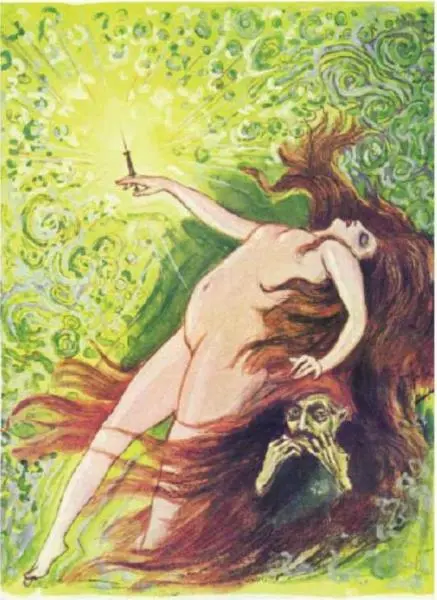
Stéphane, Morphine

The Hundegustav, 1927
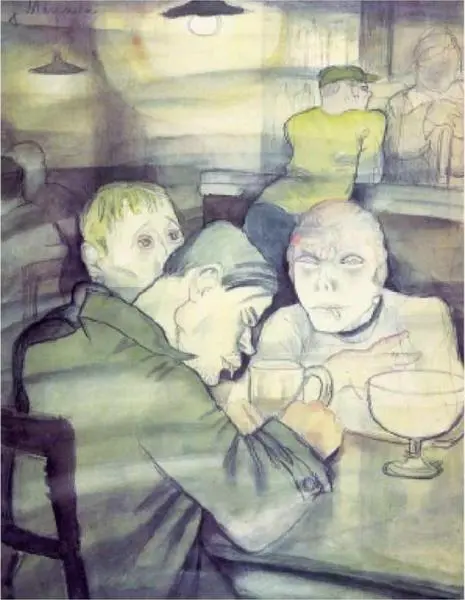
Mammen, The Blue Stocking , 1929
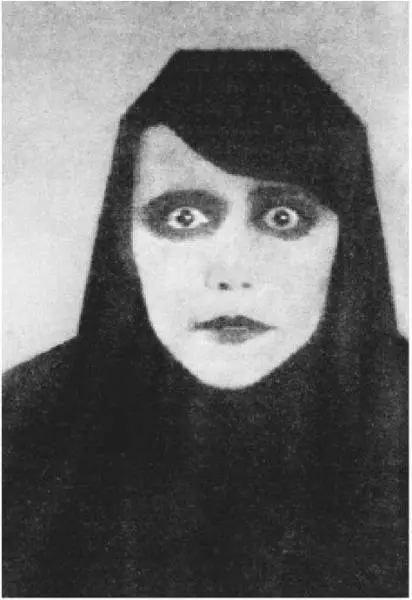
A cocaine addict
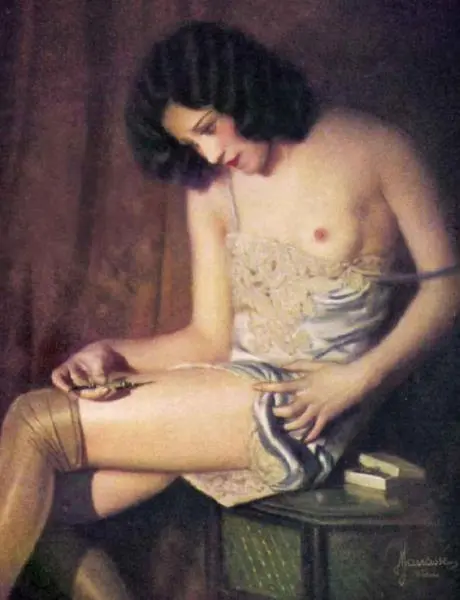
Manassé, Dangerous Passion
The Polish-born Landau got it right when he described his Berlin sojourn, “In some of the night clubs men and women produced little boxes with mysterious-looking powders at which they would sniff from time to time. Their eyes would begin to sparkle, and they would behave for the rest of the evening with an almost ghostly brightness.”
Читать дальше





















